Which caterpillar is better?
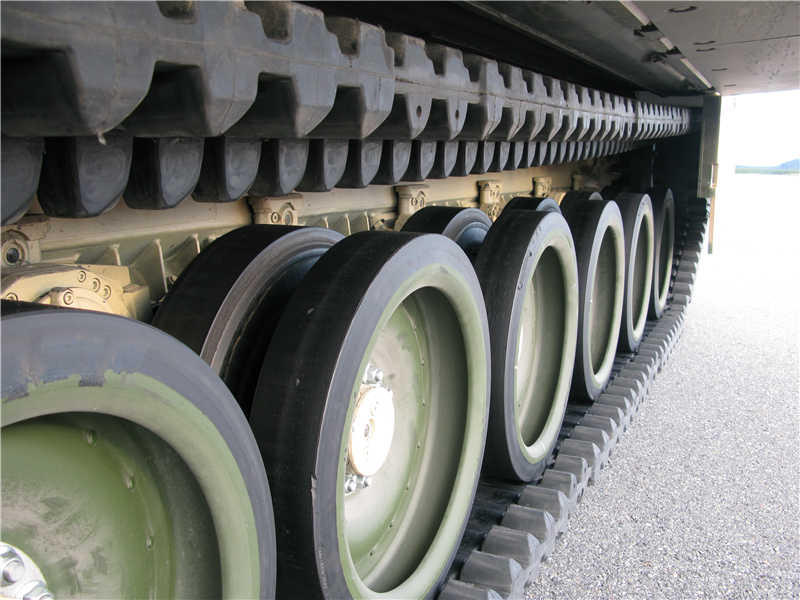
The debate about which is better - the steel or rubber track, is getting hotter. Each material has its advantages and disadvantages, the choice depends on the tasks performed by the machine, the area on which it operates, and much more.
The strength of steel or reduced vibration and rubber mass - the choice of material for the tracks of military vehicles is not as easy as it seems. Let's look at all the pros and cons of both technical solutions and the emerging mixed options.
Such tracked armored vehicles, such as the main battle tank (MBT) and BMP, remain the basis of the attacking forces of most armies, despite the changing combat situation.
These platforms must fit the widest range of operational scenarios and the development of tracks has become an area of activity that will help improve performance where debris and rough terrain pose a threat to mobility.
Machine downtime can be minimized by developing a combination of wear-resistant metal and rubber, as well as tracks that can be easily repaired or, in case of rupture, connected by soldiers in the field.
Reach the clutch
One of the most notable steps in the development of military tracks was the process of switching to rubber tracks as a replacement for traditional steel tracks. In addition to the fact that rubber tracks significantly reduce the vibration fatigue of soldiers riding in a car, they have a much smaller mass, they are quieter than steel tracks, and for drivers, management and maneuvering is simplified.
“The rubber takes the shape of the surface it touches, and for tracked vehicles, rubber vulcanized to the tracks also protects the road surface itself from destruction by the 60-ton vehicle,” said Karl Reuter, President of Reuther Mold & Manufacturing. - Rubber used in wheels, asphalt shoes and bushings allows tank move faster and softer. "
The company develops and manufactures molds for military vehicles, injection molding molds, simple injection molds and direct compression molds that are used to manufacture a variety of different black rubber parts, including track shoes, track pads and bushings for various tanks and armored personnel carriers.
Rubber tracks - rather a solid rubber track, rather than broken into segments - have become popular with users for the most part because of the operating conditions found in Afghanistan, which in this country are much tougher than conditions in previous theaters of operations where tracked vehicles were deployed, for example Iraq and Vietnam.
“The worst-case scenario for a tracked vehicle that you may come across is Afghan soil, very stony and hard for cars, it was the main cause of a reduced service life. It was one of the most difficult tests for any manufacturer of tracked vehicles, the Ministry of Defense and the Army over the past decade, ”said Eric Dion, vice president of Soucy Defense.
“In addition, whatever type of track was installed on the car, steel or rubber improvised explosive devices (IEDs) were so powerful that they damaged the tracks, wheels, suspension to the extent that the cars had to be towed back to the camp, because the damage caused the car to go unmanaged. "
Soucy has been successfully working with major manufacturers of tracked vehicles, such as BAE Systems, FFG, General Dynamics Land Systems and ST Kinetics, to develop rubber tracked belts that could not only work on Afghan soil, but also “adopt” a platform with increased installation of additional hinged armor weight.
Dion also said that most manufacturers and ministries of defense are seeking to modernize the vehicles and increase the maximum carrying capacity in order to add additional armor sets. Here, rubber tracks have an advantage, since steel tracks are 50% heavier.
Capacity building
The required type of caterpillar is determined by the mass and type of the machine, the set of tasks performed and the expected functional activity of the platform. Soucy is constantly working to expand the capabilities of rubber track technology to incorporate a wide range of these requirements.
However, this technology limited the capabilities of machines weighing more than 40 tons and there are problems in the use of rubber tracks on machines over this mass. However, Soucy is developing technology for machines weighing up to 45 tons. Other factors to consider are increased reliability, reduced vibration and reduced maintenance.
Vibration is a big problem for ground forces and, as a result, is a good incentive for finding alternatives to steel tracks. In addition to the fact that vibration affects the fatigue of soldiers moving in a car over long distances, it also causes the failure of components and electronics of the machine.
“Rubber greatly reduces vibration, up to 70% depending on the type of vehicle and the type of track, providing more comfortable conditions for the soldiers,” added Dion. - Instead of stopping every 1,5-2,5 hours, to give soldiers a break for 20 minutes, you can go 10 hours without stopping. In addition, the service life of electronics is significantly increased, as vibration is reduced by rubber tracks. "
In 2011, the company's rubber tracks were selected for testing two CV9030 infantry fighting vehicles of the Norwegian Army 28 tons in northern Afghanistan. Caterpillars, qualified by BAE Systems in full-scale tests, reduced the weight of the machine by more than one ton compared to traditional steel tracks, as well as the vibration level at 65% and noise at 10 dB, thereby reducing one of the main signs of visibility.
The BAE Systems and Soucy rubber track collaboration for the CV90 BMP began after a few years ago one of the BAE customers made a request for this technology. Since then, companies have been actively working on rubber tracks for several lighter armored vehicles, including the Bv206, BvS10 and the M113 BTR. These cars with rubber tracks Norway has exploited in Afghanistan.
Logistics volume
Currently, Mr. Dion calls the “post-Afghan depression” current machine recovery programs. These capabilities will allow you to advance the advantages of Soucy rubber tracked belts, which have a 30 – 35 tonnes life span from 3000 and 5000 km, depending on the tasks and modes of operation.
Another advantage of the rubber track over steel is a reduction in fuel consumption, the former has lower rolling resistance and, depending on the machine, fuel consumption can be reduced by 25-35%.
Rubber tracks also improve machine handling compared to steel tracks. Rubber tracks allow you to turn more sharply and provide improved acceleration and deceleration characteristics.
Soucy supplies its customers with serviceable repair kits that allow the user to assess the degree of damage to the caterpillar in field conditions, repair and drive even to 130 km (depending on the degree of damage) before replacing it. For customers looking to minimize the downtime of their machines, this is a major advantage of rubber tracks.
Similarly, Diehl's segmented 325B rubber tracks from the company chosen for the Bv206S German Army BTR provide a comparable logistic advantage. It has connector points, that is, it can be disassembled into four easy-to-use segments; These separate replaceable segments can be carried on the machine. Thus, in the event of damage to the caterpillar, the mobility of the machine can be restored even in combat conditions.
Figure Bronco new generation of armored vehicles from the company STK. The machine is shown with rubber tracks, and its manufacturer works closely on tracks with Soucy
CV90 with rubber tracks for testing in the framework of the Danish BTR competition. According to the company BAE, rubber allows you to reduce the weight of the machine on 1200 kg and the level of vibration on 70-80%
Steel solutions
Despite the growing advantage of tracks made of rubber compounds for military vehicles, there is still a significant market share for platforms that can operate in the most demanding conditions. This is something that, according to Cook Defense Systems (CDS), can only correspond to steel tracks.
The company is the only official supplier of tracks for all the main combat armored vehicles of the British army, and it also supplies tracks to operators of British vehicles around the world. In addition, he recently completed deliveries of tracks from BAE Systems for the Terrier military engineering vehicle, which will replace the Combat Engineer Tractor in the British Army.
“Although some customers believe that the mass can be reduced by continuous rubber tracked belts, the mass savings are virtually negligible for medium and heavy armored vehicles,” said William Cook, director of CDS. “In addition, most consumers want durability and aggression, which can only be provided by a steel caterpillar.”
However, since current requirements are too focused on weight reduction in order to meet the requirements for rapid deployment and air transport, CDS uses modern production methods and quality control to make their steel tracks as light as possible.
“The caterpillar we supply for the Terrier engineering vehicle is the lightest caterpillar available for the 30-40 machine, tons,” he continued. “It is also suitable for vehicles based on the M2 Bradley chassis, such as the Bradley itself and the CV90, in addition, it is installed on several prototypes in different countries of the world.”
The question of mass
For CDS, when developing tracks, the issue of mass is one of the most important. According to Cook, the increase in the mass of the machine was one of the most difficult problems encountered during operations in Afghanistan and Iraq, since the fighting vehicles were loaded with additional armor and other necessary measures were used to protect the crews from the threat of IEDs.
“When the BMP Warrior entered service, it weighed 25,4 tons,” Cook noted. - After upgrading to the standard Theater Entry Standard, it weighs significantly more. Caterpillars from CDS were able to withstand weight gain without degrading the platform. However, this increase in mass inevitably adversely affects the life of the tracks. "
As a result, military customers are increasingly “pushing” on systems with an extended service life in order to keep one of the highest costs during the lifetime of the BBM — the replacement of tracks — to a minimum.
“The service life of a steel caterpillar is determined by its polymer components, and most of the research and development activities of CDS are focused on increasing the durability of these components, which undergo an endless testing process,” Cook explained.
“Another very important requirement of the BBM operators is ease of maintenance. During training for the soldiers - it is just a tedious and tedious task to get out of the car and repair the caterpillar, and in war it can be deadly. Caterpillars from CDS have patented elements that minimize the complexity of field service and make basic maintenance as simple as possible. ”
Diehl also focused on weight reduction with its new DLT 464C “skeletal design” light tracks, which allows you to reduce the total weight by 20-30% compared to traditional steel tracks.
These light tracks are selected for the Puma BMP. They can support machines weighing up to 70 tons without impairing mobility. According to the company, the tracks retain the main characteristics of traditional tracks: safety and load capacity; long service life; do not require maintenance; low vibration; high maneuverability in various locations and low noise. At the same time they are easy to repair, they need a minimum of personnel and they have a low operating cost.
These tracks also use a quick-coupled bayonet system for quickly assembling and replacing tracks and additional grip enhancements for difficult terrain.
Diehl standard tracks also continue to be a key component of combat vehicles. The company delivered its products to various platforms around the world, including MBT AMX-30, Ariete, Arjun, Challenger 2, Leclerc, Leopard 1 and 2, T-62, T-72 and T-80; BMP-1 / 2 / 3 and Marder; M113 BTR; self-propelled howitzer PzH2000; Wiesel arms transporter.
The company has developed symmetrical tracks, each of which can be mounted on any board; this extends service life, lowers operating costs and increases machine availability. In addition, the condition of the tracks can be checked visually, and not through time-consuming maintenance and control, which minimizes the need for personnel and operating costs.
Take the best
The caterpillar market is also expanding in new directions. One of them is hybrid (mixed) solutions, for example, bolted rubber boots on steel tracks. This approach combines the strength of steel with the benefits of rubber, and the result is a product that can withstand extreme loads with very high wear resistance and has an increased service life.
The company is developing its bolt-on rubber shoes for armored personnel carriers and OBTs, including M113 and M60. Shoes are designed to expand the basic characteristics of machines, they are designed to increase efficiency when working in extreme conditions, including construction debris, low visibility and hard-to-reach places, when additional traction force, throughput and stability are needed. The shoes are made of rubber compound for the purpose of increased wear resistance, longer service life on hard and sandy soils.
To date, there is a large selection of tracked technology available to consumers. While there are still complex challenges of extending these technologies to as many types of vehicles and operating modes as possible, the existing level of “intellectual impulse” in this market in design and development ensures that tracked vehicles will remain a central aspect of ground operations at present and future theaters of war regardless of operational conditions.
Rubber tracks on different machines presented at Eurosatory 2014
(top to bottom CV90 from Bae Systems, ASCOD from General Dynamics and PMMC G5 from FFG)
Materials used:
www.monch.com
www.soucy-track.com
www.baesystems.com
www.diehl.com
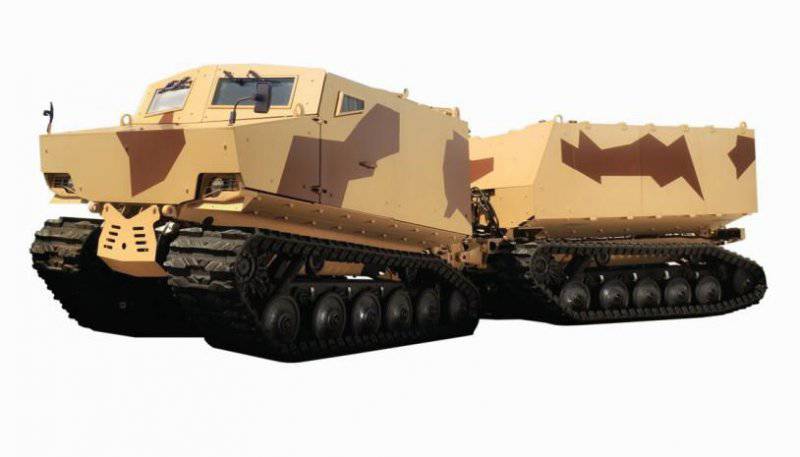
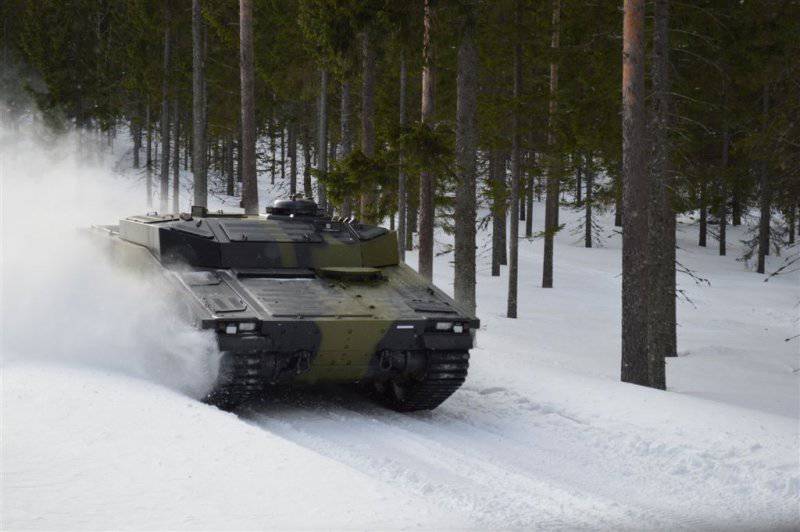
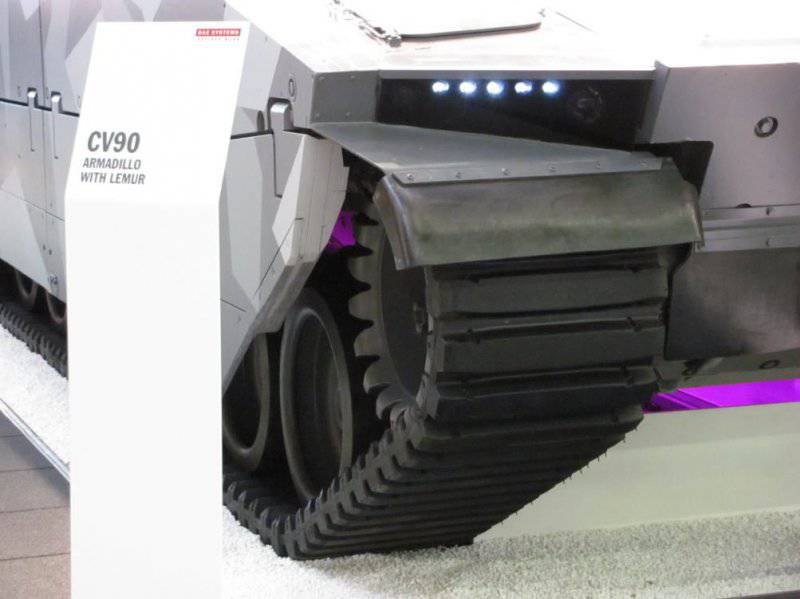
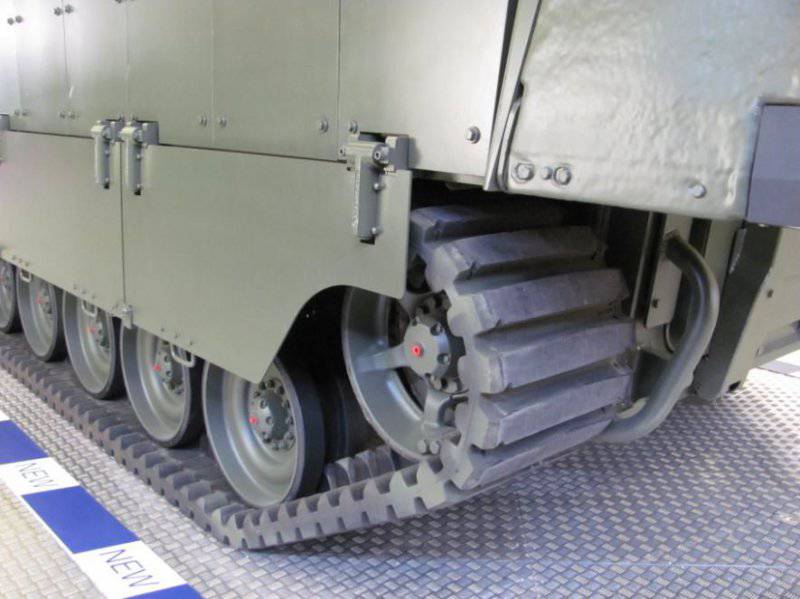
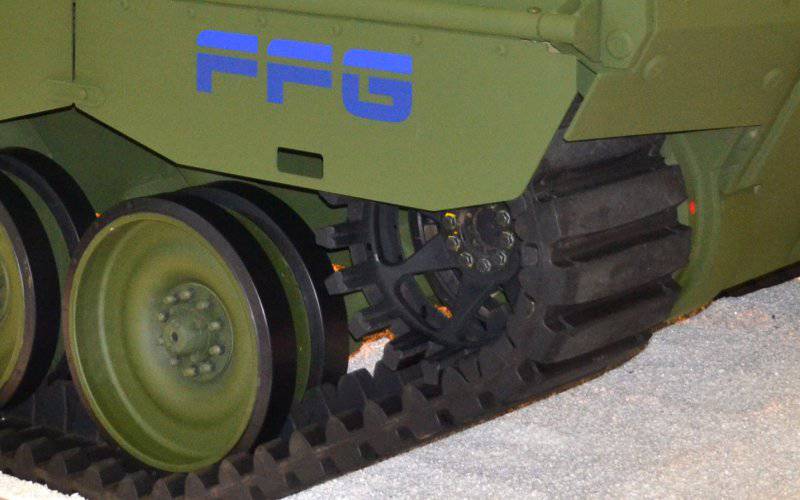
Information